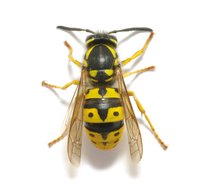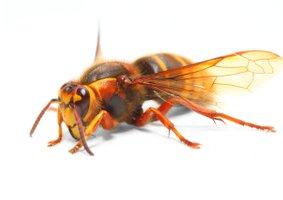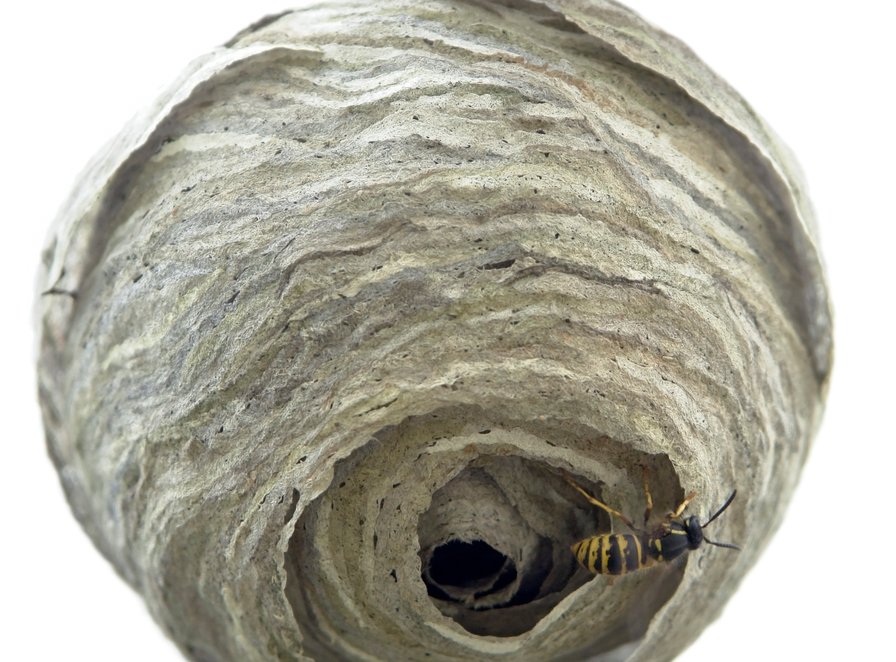PEST CONTROL FOR BRIDGNORTH
Wasps (Vespula) and Hornets (Vespa)
Common wasps are instantly recognisable because of their yellow and black stripes. They live in nests of up to 10,000 workers. They like to nest in a dry area such as an abandoned animal burrow, a corner of a garden shed, or the loft of a house.
Hornets prefer to nest in woodland areas usually in the hollow of a tree but they can sometimes be found in a tree in the garden or even in the eaves of a house although this is more unusual. They are less aggressive than the many more frequently encountered wasp species, in spite of their fearsome reputation, they generally only sting in defence of their nest or when something picks them up. Their stings are no more dangerous to humans than a wasp's but being bigger it may be more painful.
Both Hornet and wasps nests last only a year, as only the young queens hibernate and survive the winter. Drones die after mating and the workers and the old queen die off in late autumn. The nests which are made of chewed up wood pulp (paper) are never used again.
When we think of wasps and hornets we think there is absolutely nothing they are good for however wasps carry caterpillars and leaf beetle larvae back to their nests to feed their larvae. Hornets provide their nests with all manner of live insects. It takes a lot of bugs to feed a hungry brood so they do also help towards preventing pests in our crops.
Wasps also scavenge dead insects to feed their offspring. We do need this service, what would the world be like if all the dead bugs just piled up? Unfortunately, their scavenging habits and their love of sugar puts them in close proximity to people.
If you have a wasp nest which is too close for comfort to your home it is best to destroy it. Identify correctly first so as not to confuse them with the humble bumble bee or a colony of useful honey bees. You can destroy them yourself with products from a hardware store. Make sure you wear protective clothing, read the label carefully, follow the instructions and have a quick escape plan.
Anyone who suffers an allergic reaction to wasp, hornet or bee stings must get treatment immeadiately to avoid anaphylactic shock which is a dangerous condition. For further information please read https://www.allergyuk.org/severe-allergy-and-anaphylaxis/anaphylaxis
If you feel you don’t want to tackle the job contact us and they will be safely destroyed, in most cases on the day you call. Please also read the current prices for destroying wasp nests
Typical wasp nest
What you can do to help
Wasps ARE aggressive and take no prisoners...if you happen to pass too close to a nest or accidently stand on or disturb a wasp nest - run - and expect to be chased!
Flapping your arms when you have a wasp flying around and pestering you when you are sitting in the garden or a park does not help. It will let off pheromones to alert the others that you are attacking and more may appear out of nowhere. If you crush the offending wasp the same will happen. It is best to walk away, find another spot to sit or wait until it moves on.
It is interesting to note that they cannot see red (you could try wearing red clothes) and they love yellow colours (so avoid wearing yellow)
There are some smells that wasps reputedly do not like, including eucalyptus, mint and wormwood. So try dabbing some eucalyptus oil around the table, and place a mint plant in the middle of it rather than a jug of flowers. There are also repellent sprays which can be found in chemists and stores.



